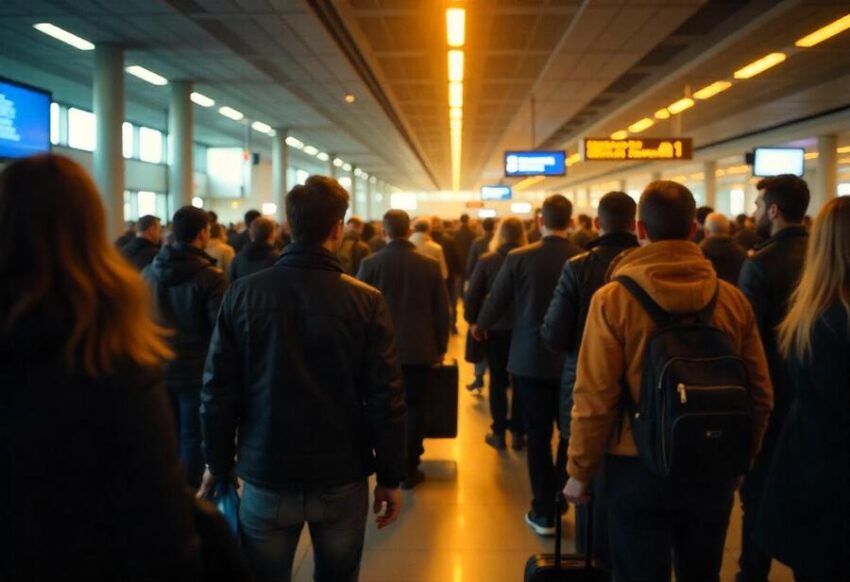Sunday, June 1, 2025

British travelers heading into the European Union are now required to undergo fingerprint scanning and biometric verification every time they enter the Schengen zone. This new protocol is the result of delays in launching a digital biometric application that was meant to simplify border checks for non-EU nationals, including UK visitors. Until the app is fully operational, all UK passengers arriving by car will have to exit their vehicles to complete fingerprint and photo scans, marking a notable change in border crossing procedures.
Mandatory biometric screening for UK visitors
Every individual traveling by car from the UK into Schengen countries must now leave their vehicle for biometric data collection. This process involves capturing fingerprints and facial photographs, replacing the traditional manual passport stamping. The EU initially planned to introduce this biometric entry system last year to enhance border security and automate the tracking of visitors’ duration of stay in mainland Europe.
The system’s core function is to register biometric information linked with passport details and verify these on subsequent visits, speeding up entry procedures while ensuring rigorous security standards. Ideally, travelers would benefit from faster, contactless checks, but due to delays, the system is not yet fully in place.
Infrastructure developments at key entry points
Significant construction efforts are underway in Kent to support these new border checks without causing severe traffic disruptions. The Port of Dover, one of the UK’s busiest gateways to the EU, is expanding by reclaiming 13 hectares of land to provide sufficient space for travelers to disembark from cars and buses for biometric verification.
Handling over 10,000 trucks and 15,000 passenger vehicles daily during peak periods, Dover is adapting to ensure the added biometric procedures only marginally increase crossing times. Officials estimate that these new checks will add roughly six minutes to a typical journey, striving to maintain smooth traffic flow despite the more involved process.
Delays in biometric app rollout and continued manual checks
A key component of the EU’s biometric strategy is an app developed by Frontex, the European border agency. Designed for use on UK Border Force devices, the app aims to allow biometric verification inside vehicles, enabling travelers to remain seated during the process. Unfortunately, this technology will not be available before November, forcing repeated travelers to continue stepping out for fingerprinting and photography until then.
This interim requirement means travelers crossing multiple times must undergo manual biometric data capture at every border, which is less convenient and slows down processing.
Advanced border monitoring solutions
To further reduce bottlenecks, Dover is introducing a virtual border zone extending approximately 1.5 miles through the town. This system uses artificial intelligence and automatic number plate recognition to monitor vehicle movements between the biometric checkpoint near the western cliffs and ferry terminals.
By tracking irregular or unauthorized movements, this digital monitoring setup acts as a complementary security layer, helping to maintain border integrity without causing excessive delays.
Trade talks to ease customs checks
While border security tightens for travelers, the UK and EU continue negotiations to alleviate the impact of Brexit-related trade controls. Both sides have pledged to seek an agreement reducing rigorous inspections on specific goods such as agricultural products. The goal is to prevent empty cargo vehicles from crossing into the UK, an issue that has complicated trade since Brexit.
This prospective deal is part of the UK government’s wider effort to reset its post-Brexit arrangements with the EU, aiming to ease trade challenges while upholding safety and regulatory standards.
Dover’s critical role in UK-EU commerce
The Port of Dover is a vital hub for commerce and travel between the UK and Europe. It manages nearly £144 billion worth of goods each year, accounting for about one-third of the UK’s trade in goods with EU countries. In addition, it serves approximately 11 million passengers annually, making it one of the continent’s busiest passenger ports.
Given its economic significance, ensuring efficient yet secure border processes at Dover remains a high priority for both British and European authorities. The introduction of biometric checks and expanded facilities reflects this focus, even though it brings new challenges for travelers.
The road ahead
When fully implemented, the digital biometric system and app will offer a future where crossings between the UK and Schengen states are faster, safer, and less intrusive. Until then, travelers should expect to adapt to new procedures requiring them to leave vehicles for biometric scans and accept slight delays.
This evolving situation underscores the complexities of border management in a post-Brexit context, balancing the need for security with maintaining fluid movement of people and goods. The coming months will be pivotal as technology advances and diplomatic agreements shape how UK-EU travel and trade will function in practice.

